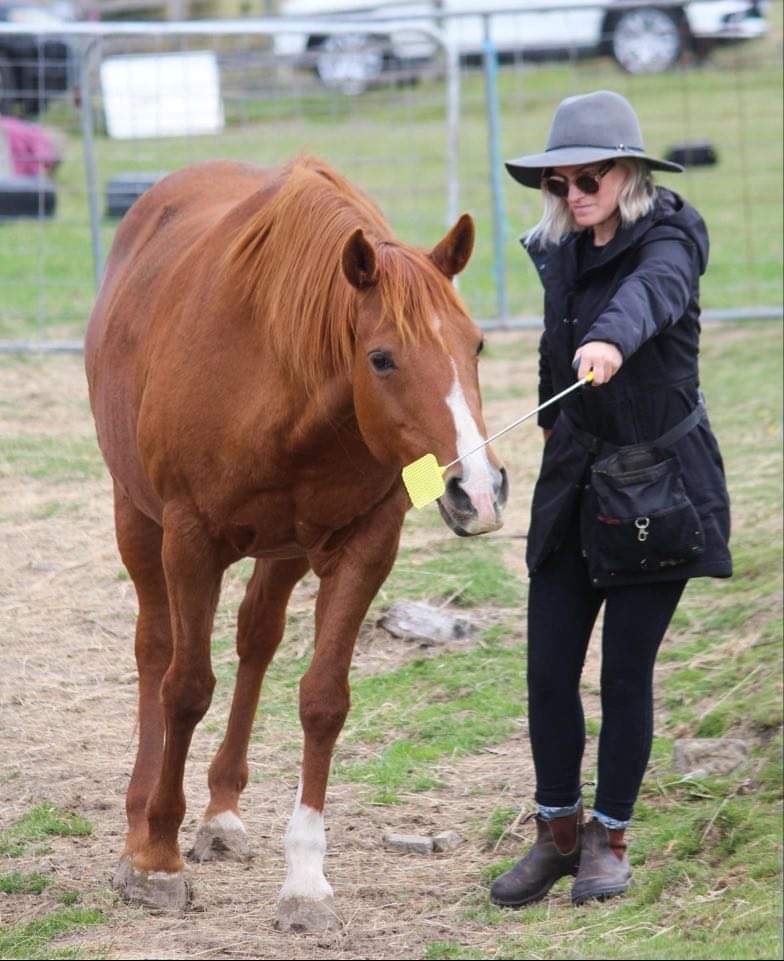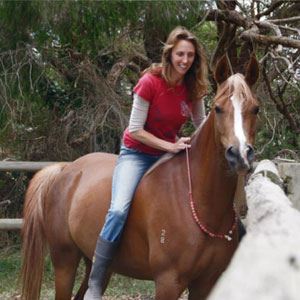- Home
- Pet Owners
- Advice for Horse Lovers
- Tools & Equipment
Tools & Equipment
There are an enormous number of tools and equipment that have been designed to help the handler and rider control and train the domestic horse. These tools are there to assist the human in training and riding and general handling of a horse, with little consideration as to how the horse is feeling physically or emotionally. Horse owners, trainers and handlers all need to be aware of the potential problems and dangers that equipment may pose. The horse not only wears restrictive and painful equipment but is also forced to carry it in their mouths and have it used to strike their bodies. The PPGA is especially concerned with the use of halters and bridles that are intended to apply This particularly refers to bits, curb and chin chains, tight nosebands, knotted rope halters, mechanical hackamores and any other devices used to restrict the horses ability to perform normal and natural head movement, function and self-carriage. Other restrictive and punishing horse equipment can include running and standing martingales, running reins, ropes used around the chin or nose, twitches, spurs and whips, which are all utilized to produce behaviour through aversive methods and pain, something that as a force free organization PPGA cannot condone. What about traditional training in horses? We realise that many people use these items of equipment because it is traditional to do so and it is seen as a necessity in order to control the horse, therefore we cannot address the use of tools without discussing training method. Training methods that are based on pressure and release, (traditional equestrianism and modern natural horsemanship techniques), usually require the handler to apply pressure via specific tools, all of which are mentioned above. Even if the training is done at “liberty” the pressure from the environment and the handler still exists via long whips and sticks, ropes and confinement in yards. Because horses are prey animals, even if the horse perceives a threat may be present they will continue to perform the behavior. This is where traditional horse training has been so effective, as it relies on the horses fear of a consequence in order to control the horse. What Can We Use Instead?
Instead of finding another piece of “tack” to further restrict the horses movements or stifle their ability to react to pain, stress or fear, why not find appropriate, harm free equipment such as correctly designed bitless bridles which are free of the risks posed by traditional bits and offer far more benefits. Secondly, it is important to teach your horse the cues on the ground first and then transfer them to the saddle. Finally, instead of punishing a behavioural problem, why not use training techniques that operate on addressing the actual cause of the behavior problem and teach them alternative behaviours (much like we would do for dogs) The PPG encourages all horse owners and horse professionals to embrace modern, scientifically based, training techniques and tools, and to get in contact with one of our PPGA endorsed Force-Free equine trainers for further assistance and guidance. These can be found on our Trainers page under Equine trainers and also on our Equine pages under references. |

 constriction, pressure, pain or force around a horses head, mouth, chin and face.
constriction, pressure, pain or force around a horses head, mouth, chin and face. We are excited to say that things are changing. There is a growing group of horse handlers and trainers in Australia and around that are discovering the beauty of force free training in horses and it is amazing to see what behaviours a horse will offer if they are given a choice in their training. There is no need for extensive equipment and harsh bits to get a horse to perform, as if you teach them what you would like them to do through the power of positive reinforcement, you will find they will offer you so much more.
We are excited to say that things are changing. There is a growing group of horse handlers and trainers in Australia and around that are discovering the beauty of force free training in horses and it is amazing to see what behaviours a horse will offer if they are given a choice in their training. There is no need for extensive equipment and harsh bits to get a horse to perform, as if you teach them what you would like them to do through the power of positive reinforcement, you will find they will offer you so much more.